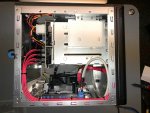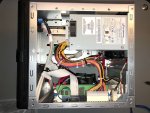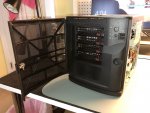I'd like to report my success with the following build. It's nothing special, but perhaps someone will find the information useful:
Motherboard: Supermicro X11SCL-IF
CPU: Intel Core i3-9100F
Memory: Micron 16GB DDR4 2666MHz ECC UDIMM
Boot Drive: Western Digital Blue SN550 NVMe M.2 2280 250GB PCI-Express 3.0 x4
Case: Supermicro CSE-721TQ-250B



I'm running with some old drives for testing right now until I have the courage to ask my wife for more money.
Never having used a server motherboard before, I was nervous about configuration, but it was straightforward. Notes:
1) I selected AMI Native Support in setup for NVMe Firmware Source.
2) I installed FreeNAS with BIOS boot (as directed by installer) and it worked fine. Later I reinstalled with UEFI boot and that was fine too.
3) By default, IPMI is shared with the main ethernet port. I used a LAN scanner to find the address, but IIRC it's also displayed on the console at boot.
4) For IPMI login, use user ID 'ADMIN' and the IPMI password printed on the sticker on the CPU socket cover.
5) Default IPMI settings are fine.
6) With the stock case fan, there's a lot of airflow through the drive bay. I've only got one disk in there right now but I think ventilation will be fine.
I have to say, security considerations aside, IPMI is very cool. It's great not having to connect a monitor.
Thanks to the community for build resources.
Motherboard: Supermicro X11SCL-IF
CPU: Intel Core i3-9100F
Memory: Micron 16GB DDR4 2666MHz ECC UDIMM
Boot Drive: Western Digital Blue SN550 NVMe M.2 2280 250GB PCI-Express 3.0 x4
Case: Supermicro CSE-721TQ-250B



I'm running with some old drives for testing right now until I have the courage to ask my wife for more money.
Never having used a server motherboard before, I was nervous about configuration, but it was straightforward. Notes:
1) I selected AMI Native Support in setup for NVMe Firmware Source.
2) I installed FreeNAS with BIOS boot (as directed by installer) and it worked fine. Later I reinstalled with UEFI boot and that was fine too.
3) By default, IPMI is shared with the main ethernet port. I used a LAN scanner to find the address, but IIRC it's also displayed on the console at boot.
4) For IPMI login, use user ID 'ADMIN' and the IPMI password printed on the sticker on the CPU socket cover.
5) Default IPMI settings are fine.
6) With the stock case fan, there's a lot of airflow through the drive bay. I've only got one disk in there right now but I think ventilation will be fine.
I have to say, security considerations aside, IPMI is very cool. It's great not having to connect a monitor.
Thanks to the community for build resources.
